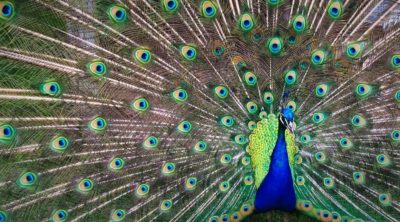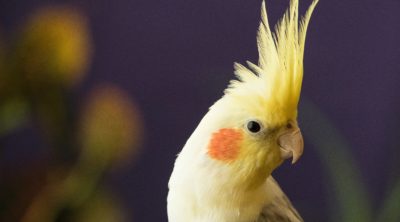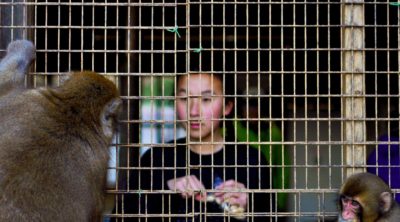
Remember the pet monkey ‘Marcel’ from Friends or ‘Spike’ in Ace Ventura movies? Yep, that’s the capuchin monkey!
Did You Know?
The capuchin monkey gets its name from a group of friars (male members) from the Order of Friars Minor Capuchin.
These members wore brown robes with large hoods covering their heads, and when the explorers in the 15th century found small monkeys which looked like these male members, they named them capuchin monkeys. This was how this monkey got its rather unusual name.
The capuchin monkey is probably the cutest little monkey after finger monkeys, which are actually so small that they can wrap their body around your finger as if it’s a tree trunk!
Capuchin monkeys are, however, bigger and an altogether different type of monkey from finger monkeys. These are one of the cleverest monkeys.
General Capuchin Monkey Information
Family: Cebidae
Genus: Cebus
Total population: Unknown
Body Size: 12 – 22 inches long in adulthood
Body Weight: 2 – 3 pounds
Species
White-fronted Capuchin (Cebus Albifrons)
White-faced Capuchin (Cebus Capucinus)
Blond Capuchin (Cebus Queirozi)
Golden-bellied Capuchin (Cebus Xanthosternos)
Tufted Capuchin (Cebus Apella)
Kaapori Capuchin (Cebus Kaapori)
Wedge-capped Capuchin (Cebus Olivaceus)
Black-striped Capuchin (Cebus Libidinosus)
Black Capuchin (Cebus Nigritus)
Range: Central America (Honduras), middle South America (middle Brazil, eastern Peru, Paraguay)
Average Lifespan: 46 years (in captivity), 15 to 25 years (in the wild)
Diet: Omnivore
Capuchin Monkeys in Their Natural Habitat
All the above species of capuchin monkey have similar characteristics. The fur of this monkey can vary in color but mostly is seen in light tan coloring around the face, shoulders, and neck. The rest of the coat is a darker shade of brown. This monkey is found in the mid-canopy regions of northern and central south American rain-forests, dry forests, and tropical forests.
It natural predators are hawks, eagles, boa constrictors, and jaguars. (Quite a few ferocious animals chasing this poor little monkey, don’t you think?). They are also hunted for meat by the local people. (Humans too?! But, not to worry…) These monkeys have a high reproductive rate and flexibility of habitat, also loss of forest does not produce a high negative impact on the population of this monkey, as compared to other species.
So, what makes capuchin monkeys as a species so successful?
There are two major facts contributing to this, the first is their ‘diet’ and second is their ‘mating habits’. As mentioned above, they are omnivores, which means they eat all sorts of foods, which can be plants or animals. A typical diet of the capuchin monkey consists of fruits, bugs, leaves, and minor birds. These monkeys are also good at catching frogs and can crack nuts as well. It is also assumed that they can feed on small mammals and reptiles.
The second important reason, their mating behavior, is polygamous and promiscuous. To understand their high reproductive behavior, first let us understand their social structure.
Capuchins live in a group of 10-30 members. In this group there are usually related females and their offspring, and several males. Generally, the group will be dominated by a single male, who has the primary right to mate with the females in the group. However, one of the white-faced capuchin monkey facts is that in the group of this species there will be an alpha male and an alpha female.
The females in the group mate preferentially with the alpha male, but the other monkeys have a chance when the alpha male is not present. The females reach their maturity earlier than males, and hence they can give birth to their first offspring even at the age of 4 years old. The gestation period is around 160 days. The parenting is left to the females (as the males don’t care about parenting), the infants are nurtured and cared by the mothers for first few months.
Did you know that capuchin monkeys tend to urinate on their hands, and rub it all over their fur? Some experts say it is a part of a bizarre mating ritual, which helps the male to attract the females. Another interesting fact is that these monkeys during the mosquito season, crush millipedes and rub it on their backs, which acts as a mosquito repellant.
Capuchins are diurnal, which means they are active during the day looking for food. Capuchins are arboreal. They have a prehensile tail, which helps when they are jumping from tree to tree. These monkeys can jump up to 9 feet. They tend to hide among the forest vegetation during most of the day, except to find water. During the night, they sleep on tree branches.
Capuchin Monkeys as Pets
Capuchin monkeys are very intelligent, and the young ones can be easily trained by their owners to perform different activities. These monkeys are popular as pets and also great attractions for street entertainment. They are also known as ‘nature’s butlers’, as they can be trained in a similar manner to mobility assistance dogs. After extensive training of infant capuchins, they can even help in performing household tasks like microwaving food or opening bottles.
To keep capuchin monkey as a pet, look for breeders. You will need to have all the supplies that will be required for its care. After you get your capuchin monkey pet, give it a short tour of your house, and sit with the monkey on the sofa and hold your monkey; you can scratch its hair. Place your pet monkey in a gated off area, and place some toys near it. Make sure you treat your monkey well, and take it to a park or your backyard at least 4 times in a week’s time for good pet care.
Capuchin monkeys fall in the category of exotic pets, so before you decide to keep one as a pet make sure they are legally allowed as pets in your region. Also, these monkeys as pets need a specialized diet, extensive mental and physical stimulation, and on reaching adulthood they might get aggressive. Hence, it is better to enjoy watching them in their natural habitat, rather than keeping one as a pet.







